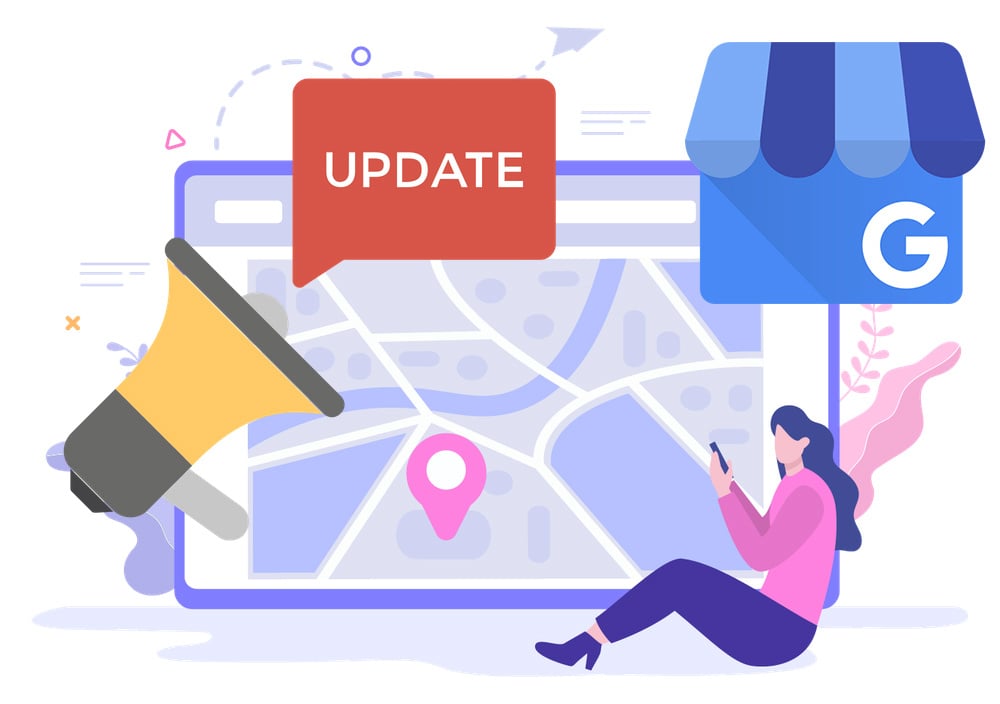As a small business owner or manager of a local franchise, you know how important it is to get more calls and jobs to grow your business. But in today's digital age, being visible online is essential to achieving this goal.
Many local service business owners face challenges like verifying their Google Business Profile and building an effective website. This blog will guide you through the steps to increase your business's web presence, using simple language and practical advice.
1. Establishing Your Google Business Profile
What is a Google Business Profile?
A Google Business Profile is a free tool that lets you manage how your business appears on Google Search and Maps. It helps customers find your business and learn important information like your business name, address, phone number, website, and hours of operation. Having a verified profile makes your business look more trustworthy and professional.
Types of Service Businesses
There are two types of service businesses:
- Service-area business: You visit or deliver to customers directly, like a plumber or a pet walker.
- Hybrid business: You serve customers at your business location and visit or deliver to them, like an auto shop with roadside assistance.
Steps to Create and Verify Your Profile
- Sign Up: Go to Google Business Profile and sign up.
- Enter Your Business Information: Fill in your business name, address, service areas, phone number, website, and hours.
- Verify Your Business: Google will ask you to verify your business. This might involve receiving a postcard, phone call, or email from Google with a verification code. Some businesses might need to do a video verification.
Verifying your business helps ensure that your profile is complete and accurate, making it easier for customers to find you.
2. Building a User-Friendly Website
Importance of a Website
Your website is your online home. It’s where potential customers go to learn more about your business, what you offer, and how to contact you. Having a website gives you control over your brand and allows you to provide detailed information that isn't limited by space like in social media profiles.
Key Elements of an Effective Website
- Usability: Your local business website should be easy to navigate. Visitors should be able to find what they're looking for quickly.
- Visuals: Use high-quality images and a clean design to make your site attractive.
- Responsive Design: Your website should work well on all devices, including smartphones and tablets. Mobile-friendliness is crucial as over 60% of global online shopping traffic now comes from mobile devices.
- Clear Messaging: Make sure your content is straightforward and easy to understand. Avoid jargon and focus on what your customers need to know.
Choosing the Right Website Builder (Buyer Beware)
There are many user-friendly and affordable website builders available, such as Wix and Shopify. These platforms offer templates and drag-and-drop features that make it easy to create a professional-looking website without needing technical skills.
That said, it's critical you know that creating your own website -- even with a user-friendly web builder -- will take a lot of time to create. More importantly, web builders do not guarantee that your site will show up online. You must request that Google Search Console index your website, a technical task that web builders won't do for you.
That's why at GoSite we create full web presences for our local service business customers that includes online directory placement and Google indexing. We take care of all of this for you so that you can focus on your business.
3. Optimizing Your Website with local SEO (making sure your website shows up when customers in your area search for your services)
What is SEO and Why is it Important?
SEO stands for Search Engine Optimization. It’s a way to improve your website so that it appears higher in search results on Google. Higher rankings mean more visibility and more potential customers finding your business.
Simple SEO Strategies
- Keywords: Think about what words or phrases your customers might use to find your business. For example, "best plumber in [your city]". Check out our keyword guides for home cleaners, auto detailers, and landscapers.
- Content: Write clear and helpful content that includes these keywords naturally. This helps search engines understand what your site is about.
- Local SEO: Make sure your website includes your location. This helps you show up in local search results when people are looking for services in your area.
4. Enhancing Mobile-Friendliness
Why Mobile-Friendliness Matters
Most people use their phones to search online. A mobile-friendly website ensures that your site looks good and works well on smartphones and tablets. Google also uses the mobile version of your site to decide how to rank it in search results.
Improving User Experience (UX) on Mobile
UX is a technical term that refers to how your website visitors feel as they explore your website. It stands for "user experience," and you don't have to be a developer to understand the basics. Here are the common sense things you can do to make sure you have good UX on your mobile website.
- Responsive Design: Your website should automatically adjust to fit any screen size.
- Fast Loading Times: Mobile users expect quick access to information. Make sure your site loads fast.
- Intuitive Navigation: Use simple menus and clear buttons that are easy to tap on a small screen.
- Readable Content: Use large fonts and concise text to make your content easy to read on mobile devices.
Tools and Strategies for Mobile Optimization
Google offers tools like the Mobile-Friendly Test and PageSpeed Insights to help you check how well your site works on mobile and give you tips to improve it. These tools can help you identify and fix issues that might be making your site hard to use on mobile devices.
5. Leveraging Social Media
Benefits of Social Media
Social media platforms like Facebook, Instagram, and LinkedIn can help you reach more people, build brand awareness, and communicate directly with your customers. It's a cost-effective way to advertise and engage with a large audience.
Choosing the Right Platforms
Find out where your target audience spends their time. For example, if you’re targeting younger customers, Instagram might be a good choice. For business-to-business interactions (like commercial cleaning or solar installation), LinkedIn could be more effective. Facebook has the most users of all other channels.
Creating Engaging Content
Share content that interests your audience, such as tips, behind-the-scenes looks at your business, before-and-after photos, and customer testimonials. Engaging content can help you build a loyal following and encourage customers to share your posts, increasing your reach.
Conclusion
Building and maintaining an online presence involves multiple steps: creating and verifying your Google Business Profile, building a user-friendly and mobile-optimized website, using SEO to improve visibility, and leveraging social media to engage with your audience. By taking these steps, you can make it easier for potential customers to find and choose your business.
GoSite is committed to helping local service businesses like yours book more jobs. We offer affordable online presence packages that include a mobile-friendly website, along with local search tools to ensure that you get found online.


%20(1)%20(1).png?width=340&name=Group%2012%20(2)%20(1)%20(1).png)


